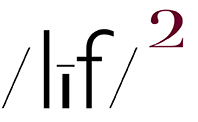(embiggenable) • iPhone
(embiggenable) • iPhone / PORTRAIT setting
(embiggenable) • iPhone / PORTRAIT setting
IN THE LAST ENTRY REFERENCE WAS MADE TO SUSAN SONTAG'S declaration, re: art criticism. That critics should "show how it is what it is, even that it is what it is, rather than to show what it means."
Consider one such effort-from Sally Eauclaire in her book, the new color photography-to follow that directive:
"Jenshel's works demonstrate photography's potential in the romantic, picturesque mode. The formal play is relaxed. The forms unfold gradually but ineluctably, while colors shift into delicately nuanced and often improbable variations. Such melifluous features prolong the pleasureable act of seeing, caressing imagination while reviving subconscious yearnings for paradisiacal worlds of milk and honey." Len Jenshel
CAVEAT It should be noted that Sally consulted with me-on matters re: photo techniques / mechanics-during the writing of her book. She had little, bordering on none, knowledge about how photographs were made, camera technique / printing materials and technique, et al. Needless to write, that upon receiving an advance copy of the book, I was delighted to find my name in the Acknowledgements on the very first page in the book. END OF CAVEAT
The above excerpt-which I really like-from the book is representative of most of Eauclaire's critiques in her book, all of which are mercifully free of photo-world jargonisms. On the other hand, it could be suggested that her writing is chock full of artspeak jargonisms and 2-dollar words. However, whatever anyone might feel about the actual words, the fact of the matter is that she consistently writes about photographs from the perspective of "the pleasureable act of seeing" and a picture's capability of "caressing [the] imagination" - an erotics of art, indeed.
Even when Eauclaire addresses things photographic such as camera formats, she does so with a literary touch:
"Len Jenshel and Mitch Epstein seem to function like 'Aoelian harps' responding when strummed by the exceptional confluences of the worlld's appearance. Using hand-held, 6x9cm cameras, they are able to cruise fluidly in search of their subjects, reacting with greater rapidity than a large format camera would allow...Jenshel and Epstein shoot intuitively and omnivorously, navigating through reams of subject matter with the mobility of fighter planes in search of an appropriate target."
All of the above written, I find it refreshing to read about the medium of photography and its apparatus / photographs written by non-photographers. That is, writers / critics who come from the greater Art World rather than from a specific segment-Photography Division-thereof. It is also why, for the most part, I like showing / exhibiting my pictures to non-photographers cuz in both cases non-photographers are much more apt to see a picture for what it is rather than searching for meaning and/or viewing it through the fog of photo gear / technique.

